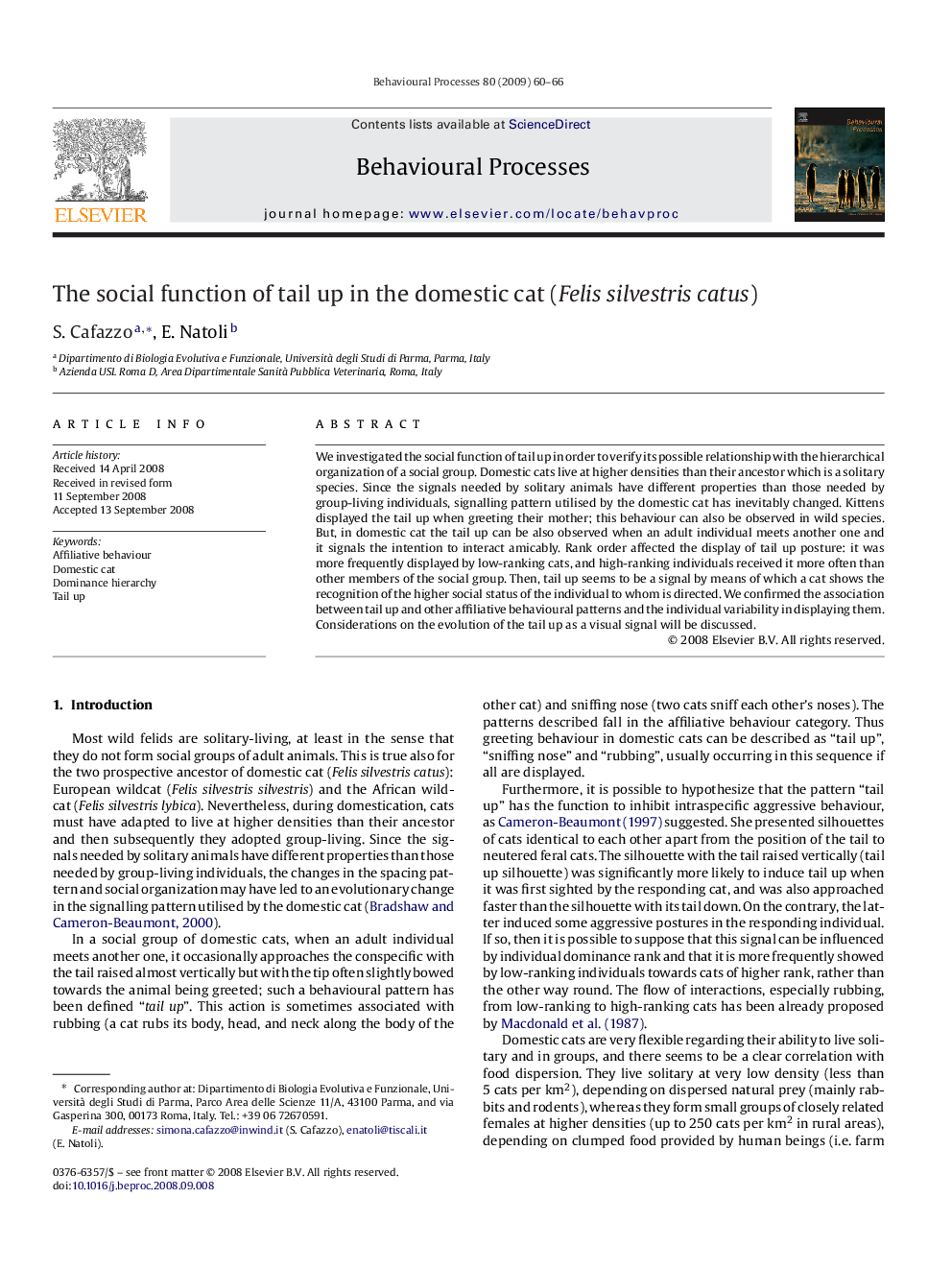| Article ID | Journal | Published Year | Pages | File Type |
|---|---|---|---|---|
| 2427575 | Behavioural Processes | 2009 | 7 Pages |
We investigated the social function of tail up in order to verify its possible relationship with the hierarchical organization of a social group. Domestic cats live at higher densities than their ancestor which is a solitary species. Since the signals needed by solitary animals have different properties than those needed by group-living individuals, signalling pattern utilised by the domestic cat has inevitably changed. Kittens displayed the tail up when greeting their mother; this behaviour can also be observed in wild species. But, in domestic cat the tail up can be also observed when an adult individual meets another one and it signals the intention to interact amicably. Rank order affected the display of tail up posture: it was more frequently displayed by low-ranking cats, and high-ranking individuals received it more often than other members of the social group. Then, tail up seems to be a signal by means of which a cat shows the recognition of the higher social status of the individual to whom is directed. We confirmed the association between tail up and other affiliative behavioural patterns and the individual variability in displaying them. Considerations on the evolution of the tail up as a visual signal will be discussed.
